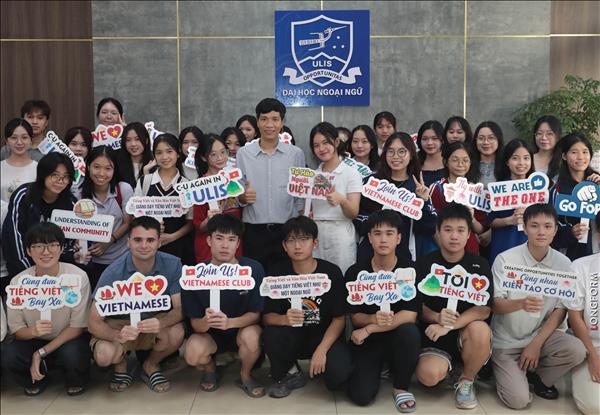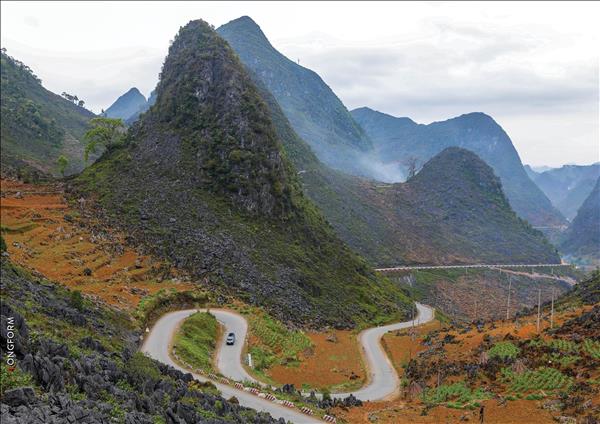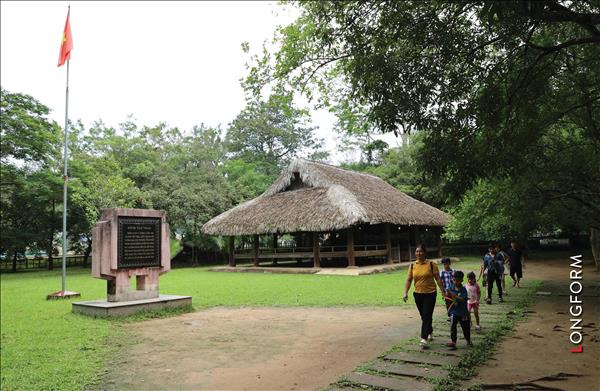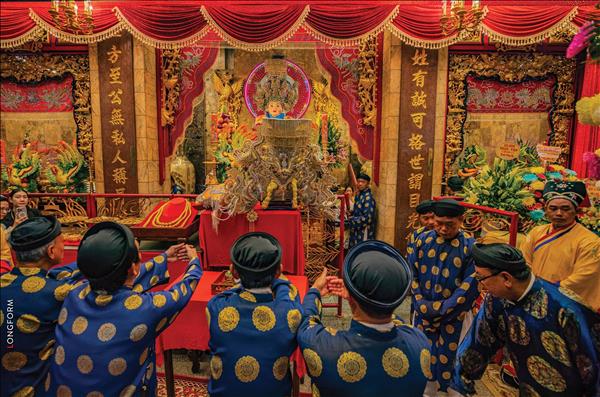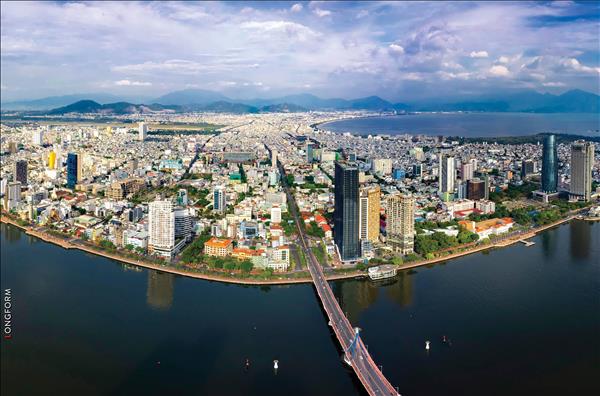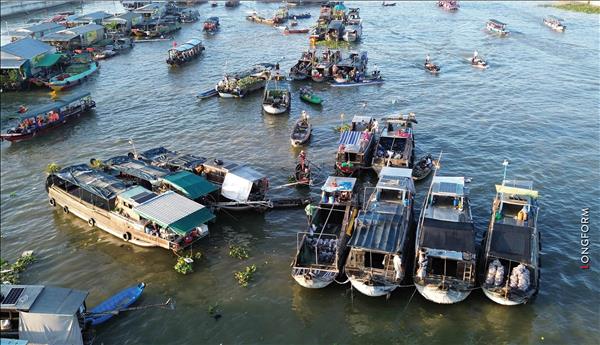Magnificent scenery
UNESCO-recognized geopark Non Nuoc Cao Bang covers more than 3,000 km2 in the districts of Ha Quang, Tra Linh, Quang Uyen, Trung Khanh, Ha Lang and Phuc Hoa, and part of Hoa An, Nguyen Binh and Thach An districts.
Non Nuoc Cao Bang is home to 130 geological sites of international value, including a national reserve, five species/habitat management areas, five protected landscapes, two biodiversity corridors, and many historical sites and tangible and intangible cultural heritages.
|
“Invested in by Sun Group, Ban Gioc Waterfall tourist complex contributes to promoting tourism in Trung Khanh district in particular and in Cao Bang and neighboring areas in general.” Pham Van Cao Trung Khanh District Party Secretary |
Non Nuoc Cao Bang is home to 130 geological sites of international value, including a national reserve, five species/habitat management areas, five protected landscapes, two biodiversity corridors, and many historical sites and tangible and intangible cultural heritages.
|
The geopark has brought opportunities for Cao Bang to develop tourism and promote the culture of indigenous ethnic groups. Photo: Cong Dat 
Ban Gioc waterfall tourist complex in Trung Khanh attracts both local and foreign visitors. Photo: Trinh Bo
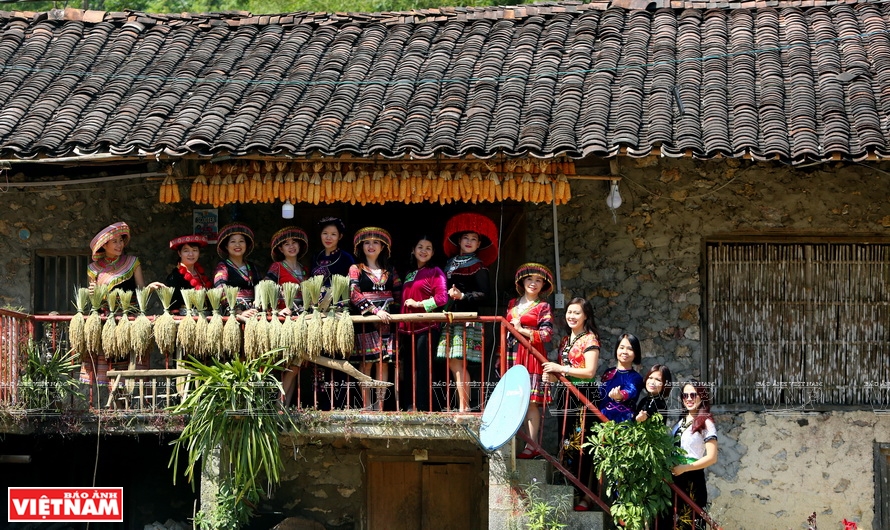 Visiting Khuoi Ky rock village. Photo: Trinh Bo 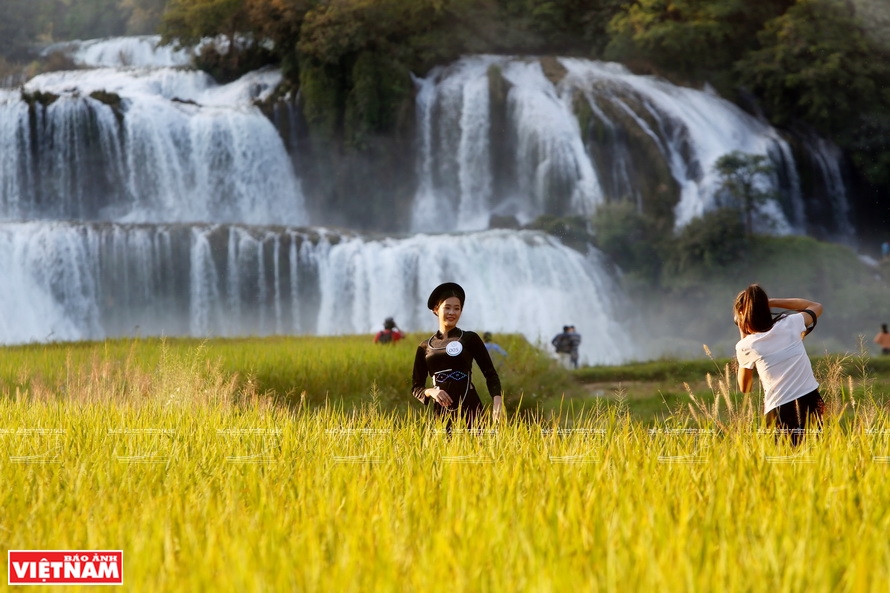 Posing to keep beautiful moments at Ban Gioc waterfall. Photo: Trinh Bo Posing to keep beautiful moments at Ban Gioc waterfall. Photo: Trinh Bo Phong Nam valley in Ngoc Con commune, Trung Khanh district. Photo: Cong Dat |
Located in Dam Thuy commune, Trung Khanh district, Ban Gioc lies on the border between Vietnam and China. The three-layer white water cascade with a width of 50m and a height of 35m is truly a wonder of nature.
About 500m from Ban Gioc waterfall is Truc Lam Phat Tich pagoda which is located on Phia Nham mountain. From the pagoda, one can see the whole of Ban Gioc waterfall and the northern border area of Vietnam.
In Non Nuoc Cao Bang, one should visit Ma Phuc pass, one of the most beautiful passes in Cao Bang, and Mat Than (god’s eyes) mountain in Quoc Toan commune, Tra Linh district. Walking on a path weaving around Mat Than mountain, visitors can explore gorgeous Nam Tra lake and Nam Tra waterfall.
Phia Oac-Phia Den national park in Non Nuoc Cao Bang boasts beautiful untouched scenery. It is home to 90 flora and 58 fauna species which are rare, precious and of high values for scientific research, gene conservation and environmental education. The forest on the western side of Cao Bang province is also regarded as a “green lung” which helps regulate the climate in the region. In winter, Phia Oac is covered with frost and ice.
Phia Oac-Phia Den is also home to a special national historical relic- Tran Hung Dao forest. It is where General Vo Nguyen Giap and 34 soldiers established the Vietnam Liberation Army Propaganda Unit, the precursor of the Vietnam People’s Army.
Original indigenous culture
Legend of the Tay has it that Cao Bang was where Thuc Phan defeated the enemy and unified the Lac Viet and Tay Au. He founded the country of Au Lac and became King An Duong Vuong. Cao Bang was thus a political and cultural center during the period of founding the country, even though An Duong Vuong later moved the capital to Co Loa in Dong Anh, Hanoi.
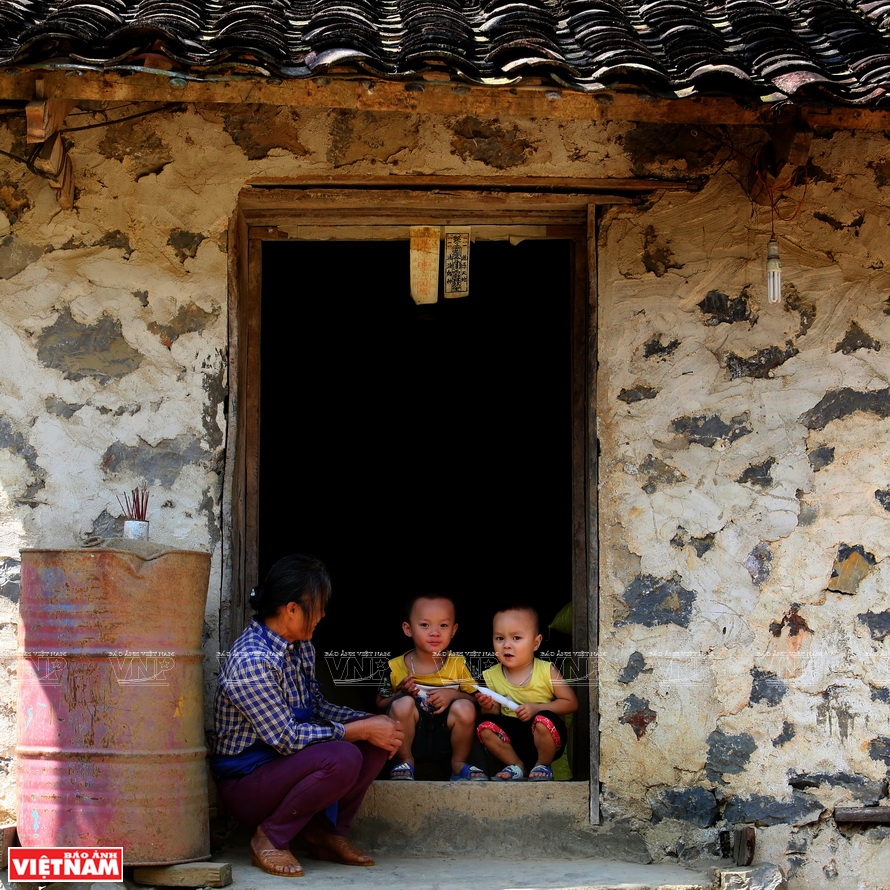 Khuoi Ky village is home to 400-year-old rock stilt-houses. Photo: Trinh Bo Farmers in Phong Nam commune carry harvested rice on a small wooden bridge over Quay Son river. Photo: Cong Dat Phia Thap village at the foot of Pha Hung mountain is known for its incense making craft. Photo: Cong Dat 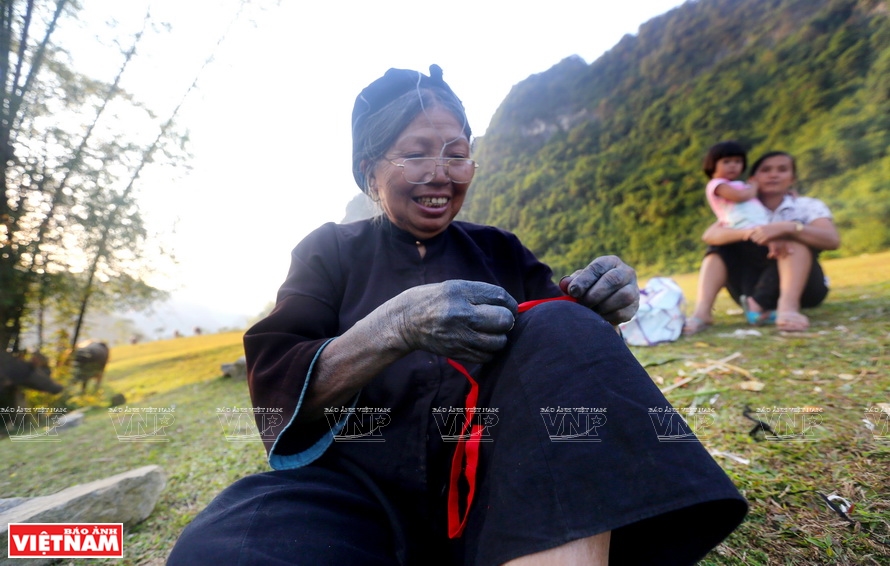 Dyeing cloth, a traditional craft in Trung Khanh. Photo: Trinh Bo
Arrowroot vermicelli in Phia Den is one of the best vermicelli in Vietnam. Photo: Cong Dat
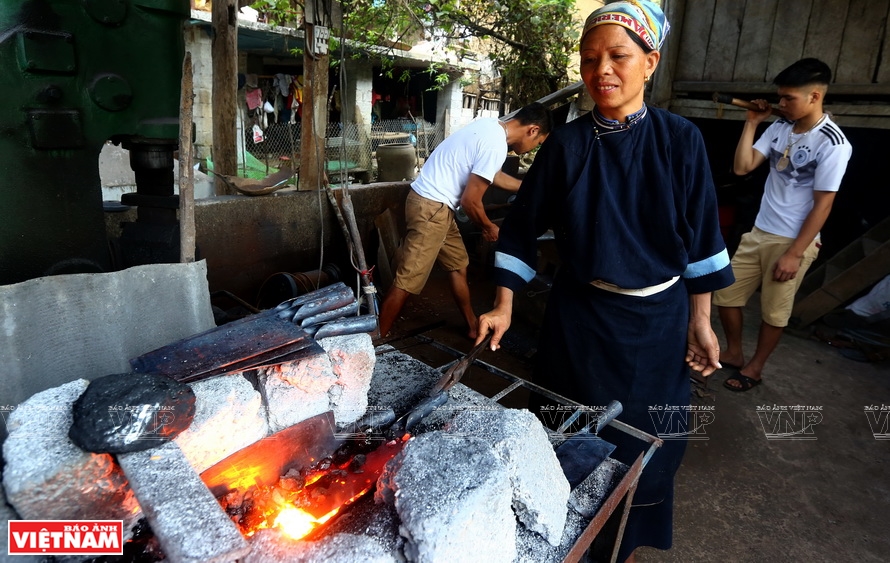
Phuc Sen commune has about 150 family forges scattered among six villages. Photo: Trinh Bo
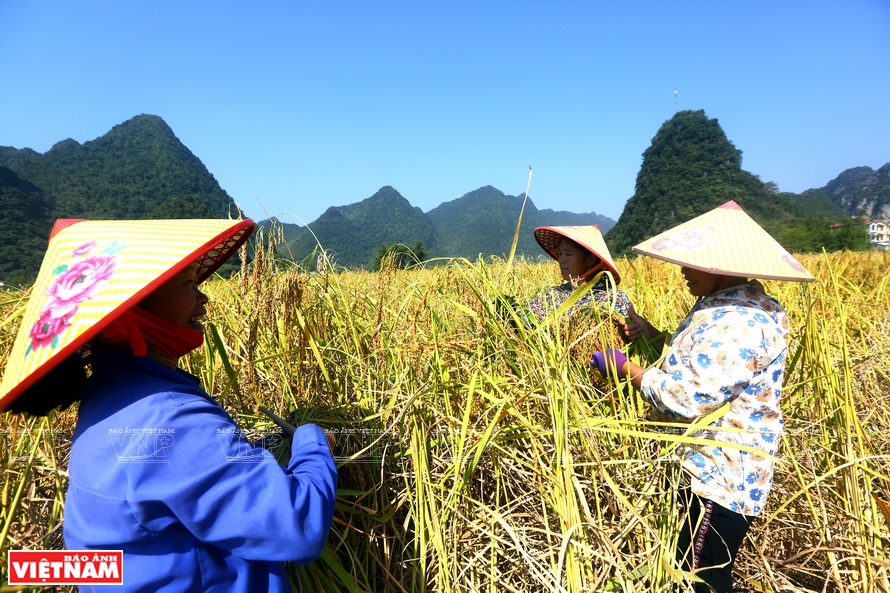 Harvesting rice in Ngoc Con valley. Photo: Trinh Bo 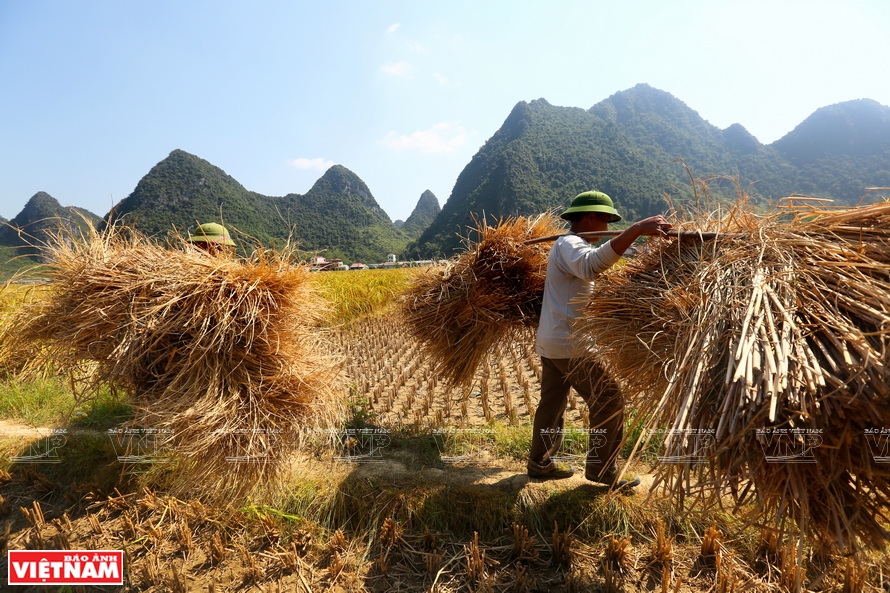
Harvesting ong (bee) sticky rice, a specialty of Trung Khanh. Photo: Trinh Bo
|
In Cao Bang, there are nine ethnic groups, including the Tay, Nung, and Dao, who have created a unique and vivid cultural picture here.
Non Nuoc Cao Bang has many craft villages, including the Pac Rang forging village and Phia Thap incense village.
The forefather of the forging craft in Pac Rang was believed to be an old man who accidentally passed the area and taught the craft to the Nung An. The Nung An then built a temple dedicated to this man and every Nung An family has an altar at home to worship the forefather of the craft.
In Phia Thap village, the incense making craft has been passed from one generation to another. Phia Thap incense is safe and has a natural scent because all of its materials come from forest plants.
Non Nuoc Cao Bang is also home to dozens of folk ceremonies, including the Quang Uyen firework festival, and the Long Tong festival of the Tay, Nung, Dao and San Chi. At these festivals, visitors can see beautiful traditional costumes of indigenous ethnic groups and try tasty local dishes. Among the specialty foods in Cao Bang are smoked sausage, roasted duck, roasted suckling pig, grilled meat, sour fish hotpot, and sticky rice with caranium.
Visiting Non Nuoc Cao Bang, one will enjoy valuable moments of relaxation in the beautiful natural scenery and the peaceful life of ethnic locals.
|
“Non Nuoc Cao Bang geopark has geological value, particularly in the Phia Oac mountain area where nearly 100 million years ago, volcanoes erupted, creating volcanic rocks and numerous minerals, including tin, gold, wolfram, fluorite, and uranium.”
Dr. Tran Van Tan, director, Vietnam Institute of Geosciences and Mineral Resources,
Ministry of Natural Resources and Environment |
Story: Trinh Bo - Photos: Cong Dat & Trinh Bo

